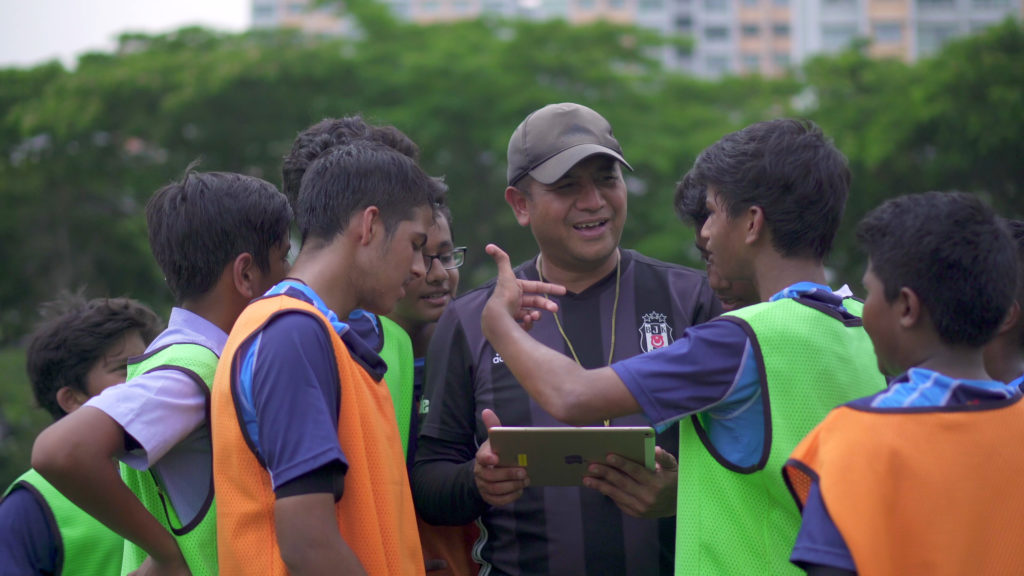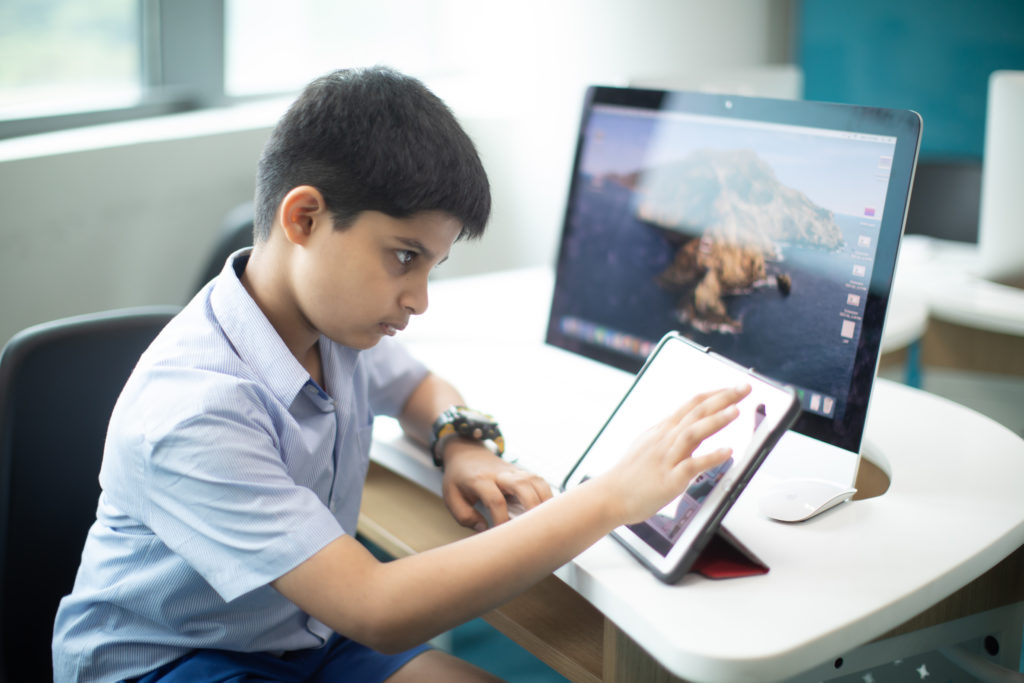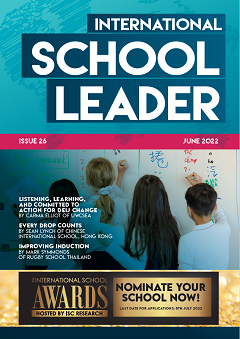By Melissa Maria
How do you run a campus with 3,500 students who have the option of learning multiple curricula under one roof, right from their early childhood years until they graduate high school? It’s a humongous task to say the least, and it’s challenging. But it’s not impossible, especially when you have designed it to be one of the first smart campuses of the world.
It all boils down to ideation, amalgamation of innovative methods, superior technological infrastructure and, of course, a zealous and enthusiastic staff who have to be forever ready to upgrade themselves for the benefit of the students. This is what the Global Indian International School (GIIS) Smart Campus stands for. Four years since its inauguration, the school premises are unlike any other school in Singapore, the design is unique and customised to derive maximum benefit to the students, and the environment is fully tech-enabled to cater to the needs of the new generation.
Turning a smart idea into reality
Nearly a decade ago, the idea of a smart campus took root within the GIIS management, especially our chairman, Mr Atul Temurnikar. As this seed began to take grow, it was pruned and nurtured to eventually become a campus that took a giant leap into the future, where education transcended the walls of the classroom.
The ideation stage was where I and other educators contributed. The main excitement was shaping a school that would cater to the younger generation, who are born into the digital economy where gadgets are gurus. We at GIIS foresaw this change around us, and realised that the education sector was not going to remain untouched by the digital revolution.
Not only did we plunge ourselves into researching what education of the future will look like, we also brainstormed to decide how this futuristic style of teaching and learning can be customised to our mission and our core values. We positioned ourselves as an edtech organisation, where education and technology walked hand in hand to provide knowledge in a fun, interactive and innovative way.
Education for self-improvement
In the age of artificial intelligence and Wi-Fi, we equipped the classroom with both: smartboards, smart devices and a super-fast system to run these gadgets on virtual platforms. By providing access to the internet in an age-appropriate and meaningful way for our students inside the classrooms, we expanded the horizons of our students’ imagination, we gave them the freedom to think out of the box, we gave them the power to reach out to knowledge sources on their own and we encouraged them to excel through collaboration and critical thinking.
Physical infrastructure was not enough to shape a smart school. We wanted to go beyond that and leverage the advanced technological offerings in such a way that education was not just grading and scoring marks. For us it became a process of self-improvement, with the help of teachers, staff and management who invested in the right methodologies at the right time to give the best to our students.
Teachers were given training and several opportunities to upgrade their knowledge. They went digital, they did workshops and they got out of their comfort zones to explore new directions to stay in step with the needs of the students. Not only that, but our in-house software engineers also designed tools and systems that used data to extract benefits for the students beyond just exam marks.

Data-led progress
Data analytics, a science of understanding numbers, was deployed through formulae that determined the progress of students within and outside the classroom. Data helped teachers understand the strengths and weaknesses of their students in subjects, segments, standards, etc. The scores, when graphed with mathematical precision, determined the progress of each student, and helped teachers understand which areas needed improvement for which student.
Data was also cleverly used outside the classroom, on the sports field. Through sensors and chips deployed in the premises and on the person, sports fields became a rich ground of collecting data while play was in progress. A player’s stamina, strength, velocity, speed, etc, were captured through special software, which when analysed, gave a complete picture of a player’s performance. This helped coaches work on their players in specific areas to improve the game.

Holistic growth
Our emphasis was on all-round development of students. Not just academics or sports, but the arts, skills of leadership and entrepreneurship were nurtured through specific programmes like bootcamps. Special studios were set up to train students in skills that were beyond textbooks – such as videography, radio jockeying, design, pottery, languages, culinary arts – to encourage students to be more than the marks they aspire to get. These skills teach students to collaborate, to communicate and to express themselves in more ways than one.
At the same time, they are encouraged to participate in community service, be socially active, be compassionate and be mindful in their behaviour. This all-round nurturing, coupled with the available resources of smart technology, give our students a decisive edge over peers. They are much more knowledgeable, innovative, mindful and kind. This is a conscious decision on our part, and as the principal, I ensure that all these values are imbibed in each cohort year after year through specific programmes designed for such outcomes.
Prepared for challenges
This advanced outlook not only gave us a head start in education of the 21st century, but it also cushioned us through challenges like pandemics and threats. Our smart classrooms were active even when the whole world came to a standstill during the COVID-19 crises, because we could implement a blended learning system where students were able to study from anywhere in the world. They just logged on to the classroom from wherever they were. Continuity of education was ensured, and nothing was missed out.
Our smart systems deployed way before the pandemic, such as facial recognition machines and smart cards, came in handy to implement a touchless system, which provided an additional layer of security and safety to our stakeholders. No transmission of viruses is possible, when there is no physical contact necessary. Our smart food kiosks allowed parents to pre-order food, to eliminate the possibility of contamination or of aggravating allergies.
Platforms and apps, such as Zoom, Google Classroom and virtual exams, gave students the flexibility to participate in school activities without harm. Our CCTV cameras kept a watchful eye on the physical security of the premises, ensuring that each student was safe while in school.

Specialists for a new educational age
The Smart Campus needed a fresh outlook to come to life. From hiring in-house architects to design the building, to IT support to bring the ideas to life, we had teams who could make this idea a reality. Existing educators were trained to use the technologies and specialised faculty was hired to impart skill-based education to students. We also earned the trust of our parent community in the necessity of new-age education and got their approval.
Now, our Smart Campus has come to the point where education is not just imparted seamlessly but in a manner that is engaging, non-intrusive and participatory. We are still engaging in self-improvement. Teachers are still getting trained to upgrade their skills, research is still being conducted to bring in more innovative ideas for better education and technological infrastructure is still being improved so that we don’t lose the edge that we already have.
It is not going to be an easy walk in future. The education landscape is evolving constantly, but our vision and attitude is such that we want to be completely in tune with the changes and adjust ourselves to the needs of the time to give the best outcomes to our students. This attitude will stand us in good stead for decades to come, as we keep a watchful eye on the future and maintain a firm footing in the present. As long as we continue to do that, we are confident that we will keep our rein on the land and provide excellence in education that each parent wishes for their child.
Schools that adapt this attitude can never go wrong.

Five things you need to do to set up a smart campus
- Do your due diligence. Research what is available and what is possible. The market can have hundreds of things to offer, but your stakeholders need to be willing. Doing your homework on the needs and wants of the market will help you take better decisions.
- Take baby steps. Start small. Make a list of the most important infrastructure that will be easy to install and safe to use. Tick one box at a time.
- Train the educators. A smart campus will function only when the educators are using the infrastructure to impart new-age style education in the right way. Train your educators to use latest technology and encourage them to upgrade themselves.
- Have a support team. Glitches will be inevitable when infrastructure is digital. Have a strong support team in place to firefight. The team should also be able to customise new technologies to suit your pedagogical framework.
- Review and upgrade. Ensure that the infrastructure gets upgraded periodically. Bring in new technologies, when necessary, and archive old ones in time.

Melissa Maria is Principal of Global Indian International School Smart Campus in Singapore. Connect directly with Melissa on LinkedIn


